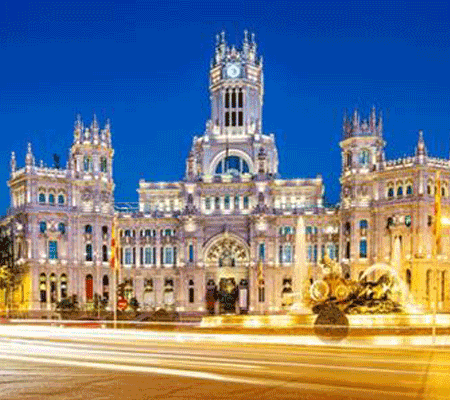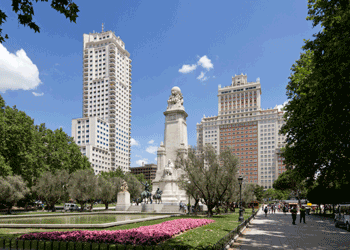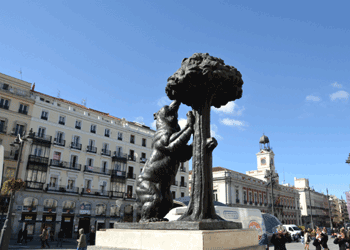
History of Madrid
Madrid was one of the most heavily affected cities of Spain in the Civil War (1936-1939). The city was a stronghold of the Republicans from July 1936. Its western suburbs were the scene of an all-out battle in November 1936 and it was during the Civil War that Madrid became the first European city to be bombed by airplanes (Japan was the first to bomb civilians in world history, at Shanghai in 1932) specifically targeting civilians in the history of warfare.The Madrid region features a Continental Mediterranean climate with cold winters due to altitude (650 m (2,133 ft) above sea level in Alicante), that includes sporadic snowfalls and minimum temperatures below freezing point. Madrid is the European city with the highest number of trees and green surface per inhabitant and it has the second highest number of aligned trees in the world.









